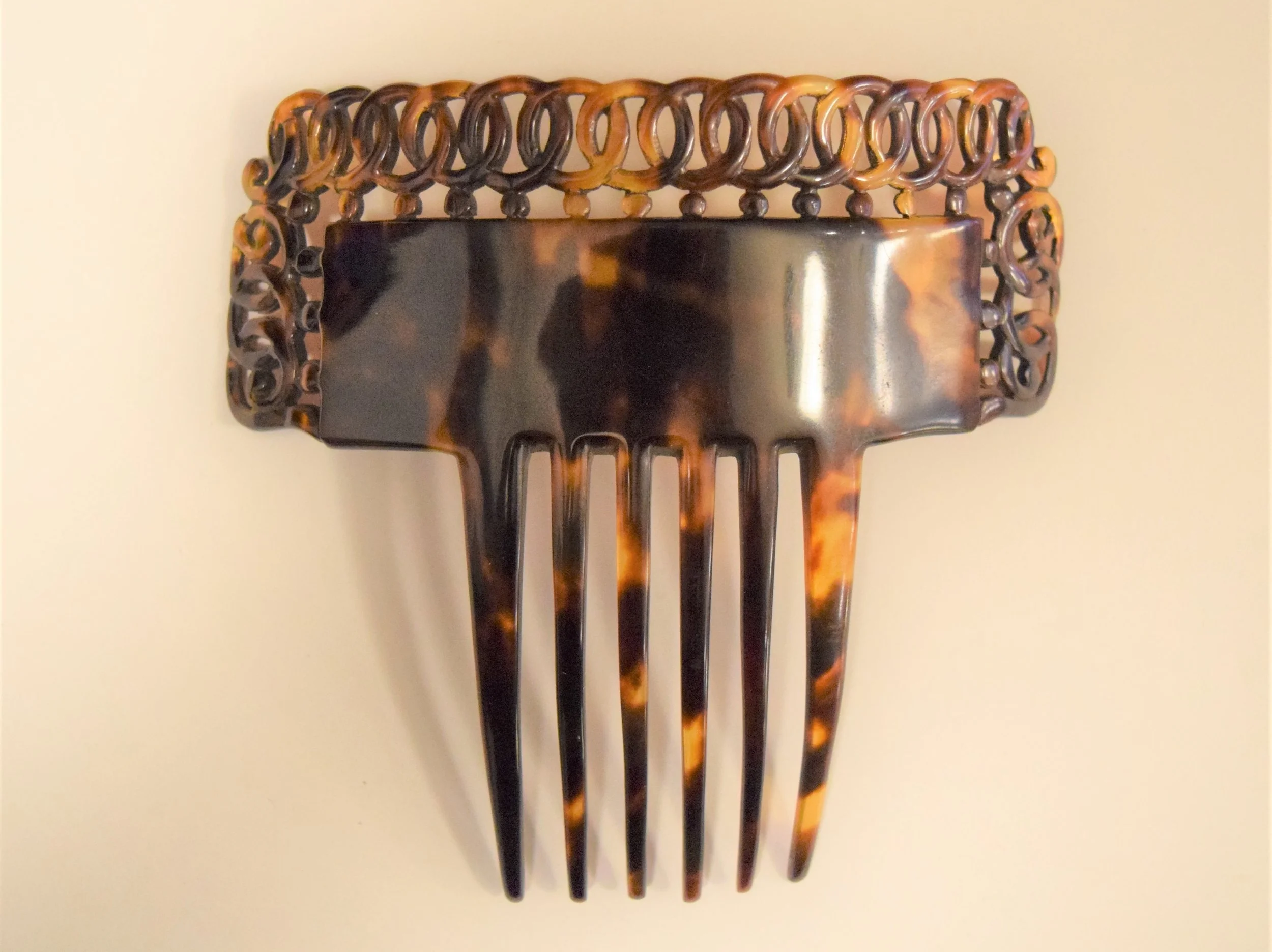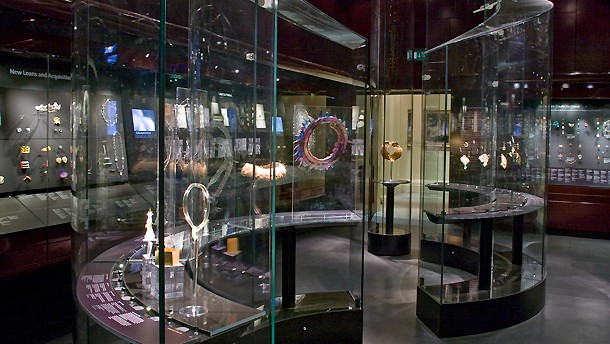Gleaning the styles of the day from Victorian portraiture and photography, it seems like the order of the day was swirling rolls and curls laboriously piled atop the head in any number of different ways! When sitting for these images, women would have worn their most flattering styles, adorned with their most fabulous accessories, giving us a window into the world of antique hair styling. Here, we take a quick look back at two of our favorite Victorian accouterments: hair combs and antique barrettes.
Victorian tortoiseshell and hand-engraved 14K gold hair combs, made c. mid-late 19th century.
Hand carved Victorian tortoiseshell comb, made c. mid-late 19th century.
Some of the loveliest and most popular material we find them in are tortoiseshell and horn. The ‘Tortoise’ name is misleading, as these pieces were actually made from sea turtle shells, a source of material beauty since ancient times. Imported tortoiseshell could fetch high prices, so horn was painted to achieve a similar mottled effect. Both were popular until toward the end of the 19th century, when Art Nouveau jewelers began favoring lighter colors.
Art Nouveau horn barrette c.1880 - the rose cut diamond-set 10K gold frontspiece is delicately riveted to the horn. The horn would most likely have been bleached with hydrogen peroxide to achieve the pale yellow hue.
Barrettes, an evolution of the hairpin, were developed in the mid to late-19th century to help hold hair in place. They were decorated so that they did not have to be hidden within the hairstyle, a combination of form and function that we still appreciate today!
Across the 19th century, the tortoiseshell hair comb remained a hairdressing staple to both hold hair in place and provide support as styles oscillated between opulent and austere. While the decorative comb has waned in popularity since, the beauty of tortoiseshell endures today in any item inspired by its coloration.





































